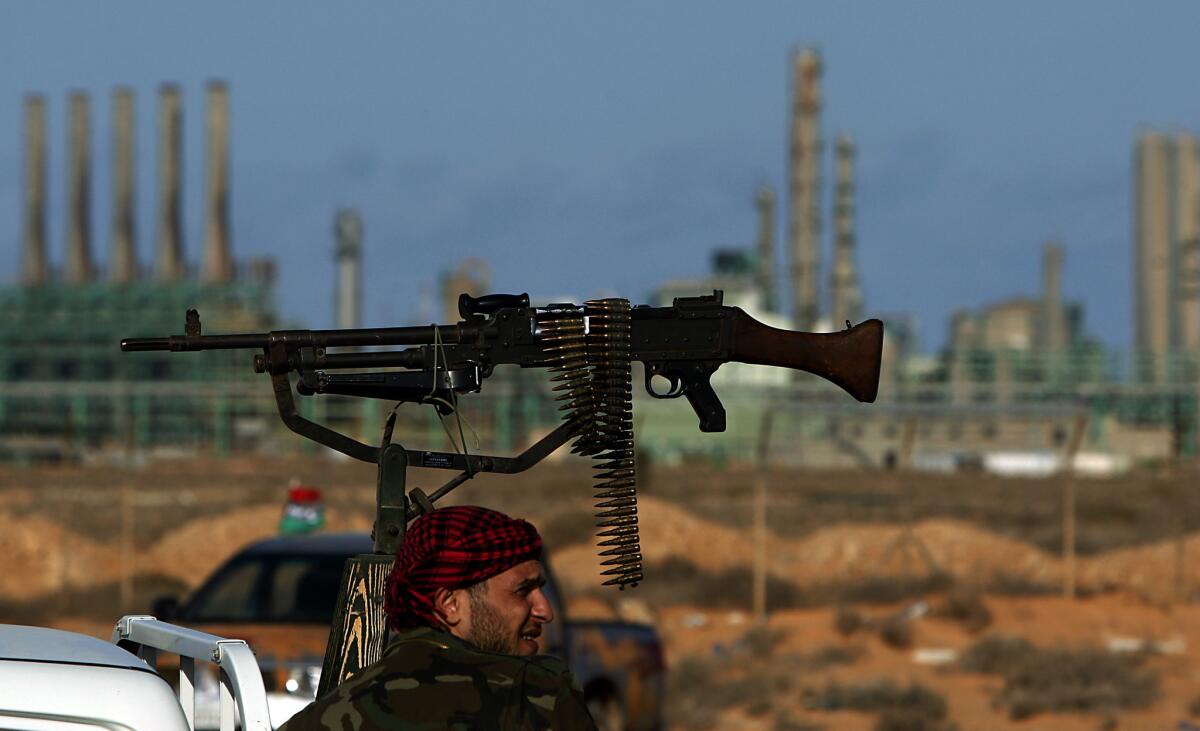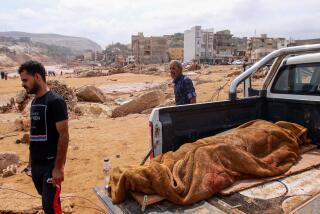Fighting in Libya curbs flow at major oil terminals

- Share via
Reporting from Benghazi, Libya — The flow of crude oil to and from Libya’s two biggest oil terminals slowed to a trickle Monday after fighting between militias intensified in the turbulent North African country’s energy-rich east.
Even before the latest outbreak of strife, the Libyan state had teetered on the brink of collapse. Months of fighting between militias loyal to two competing governments – one in the capital, Tripoli, and one in the eastern city of Tobruk – has largely resulted in a standoff.
The United Nations has been trying to broker an accord between the factions, and a second round of talks was to take place this week. But the fresh fighting was likely to cloud that effort.
Over the weekend, militias allied with the Islamist-leaning Libyan Dawn movement, which controls Tripoli and much of the country’s west, attacked the two oil facilities, confronting forces loyal to the internationally recognized Tobruk-based government. The Libyan Dawn ground advance drew retaliatory airstrikes near the contested terminals, and Libyan news reports said at least five people died in the fighting.
Oil officials said only minimal staff remained at the Ras Lanuf and Sidra terminals southwest of Benghazi after the declaration Sunday of a state of force majeure, a legal designation that allows the state-run National Oil Co. to renege on its international commercial commitments. Together, the two terminals account for more than half of Libya’s output of crude oil.
The country has been swept by turmoil since the 2011 ouster of Moammar Kadafi amid the regionwide uprisings known collectively as the Arab Spring. Armed groups that worked toward the common goal of overthrowing the longtime dictator swiftly turned on one another, carving up the country into what amount to fiefdoms.
In the interim, regional powers have thrown their weight behind armed factions competing for political influence and oil wealth. Neighboring Egypt and economic powerhouses such as the United Arab Emirates support the Tobruk administration, while wealthy Qatar has lent support to Islamist armed factions that overran the capital in August and sought to reinstate a parliament whose mandate had expired.
Energy production has long been the linchpin of Libya’s economy, which has been battered by continuing unrest and more recently by plummeting oil prices.
Libya’s main eastern oil ports had reopened only over the summer after a separate power bid by an eastern-based militia leader who shut them down for nearly a year as he sought to wrest a greater share of oil revenue from the then-government in Tripoli.
In addition to the struggle for eastern oil ports, confrontations have erupted near Libya’s western border with Tunisia. Despite the fighting, foreign laborers have continued to enter and exit Libya from the Ras Ajdir crossing with Tunisia, and Egypt’s Foreign Ministry warned its nationals to avoid the area after two Egyptians were reported killed Sunday.
Enormous amounts of Libyan weaponry – much of it looted from Kadafi’s formidable arsenal – has found its way onto the arms market, fueling conflicts including that in Egypt’s Sinai peninsula.
Special correspondent Juma reported from Benghazi and staff writer King from Cairo.
Follow @LauraKingLAT on Twitter for news from the Middle East.
More to Read
Sign up for Essential California
The most important California stories and recommendations in your inbox every morning.
You may occasionally receive promotional content from the Los Angeles Times.













